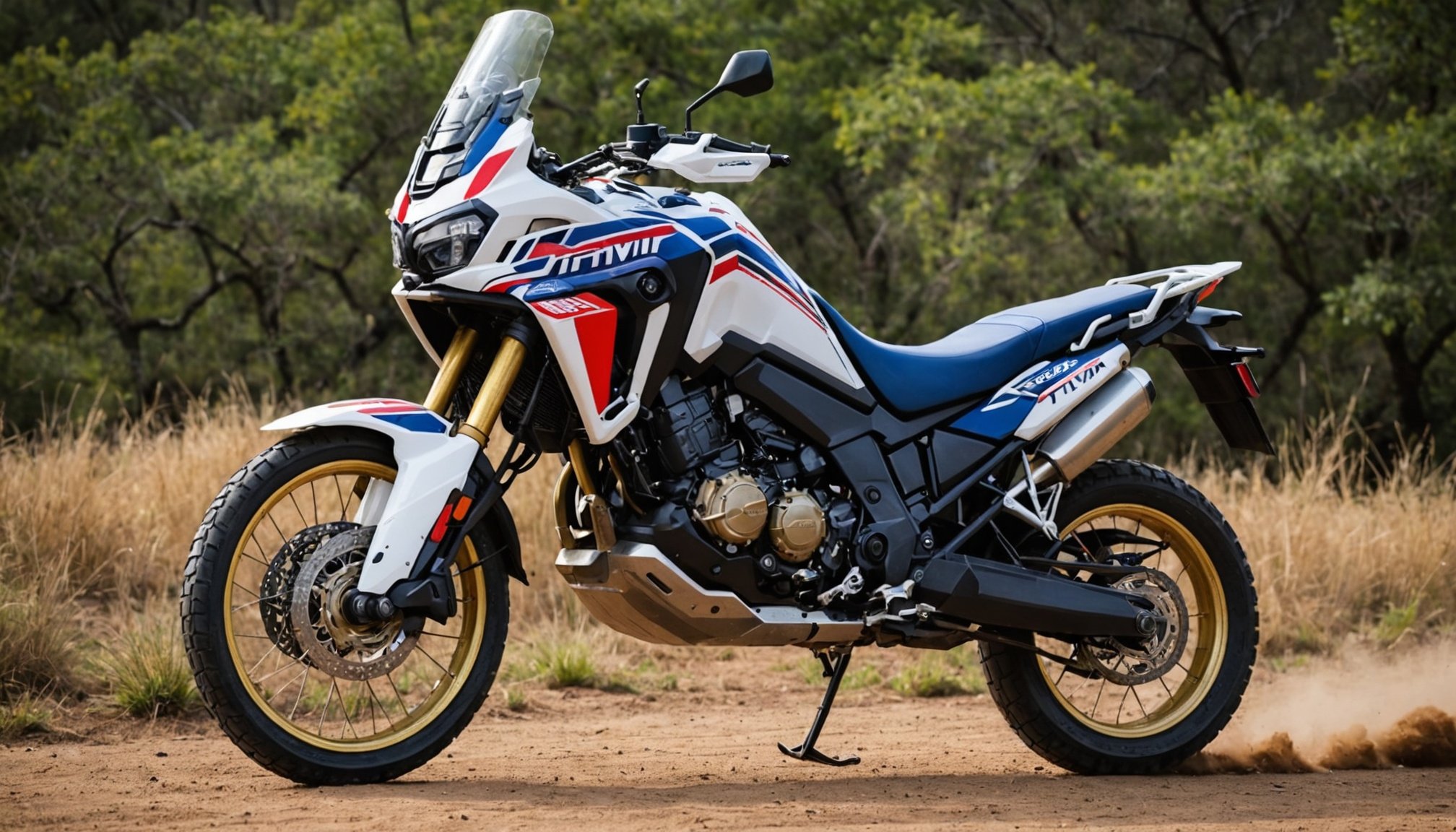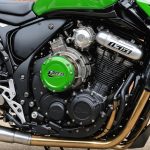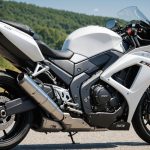Overview of Brake Fluid Importance
Understanding the crucial role of brake fluid in motorcycle performance is vital, particularly for Honda Africa Twin care. Brake fluid, an indispensable component, enables efficient energy transfer from the brake lever to the brake pads, ensuring effective stopping power.
Neglecting brake fluid maintenance can lead to severe safety concerns. As time passes, brake fluid can absorb moisture, diminishing its performance and potentially causing brake fade, where the braking system’s efficiency is compromised. This not only affects ride quality but can dramatically compromise motorcycle safety.
Topic to read : Exploring the Advantages of Upgrading Your Honda VFR800 Exhaust System for Ultimate Touring Performance
Regarding the available types, there are generally three common brake fluids: DOT 3, DOT 4, and DOT 5.1. Each type has unique characteristics and boiling points suited for different operations. For example, DOT 3 and DOT 4, both glycol-based fluids, are most common in general motorcycle use. Meanwhile, DOT 5.1 offers a higher boiling point, making it suitable for vehicles under extreme conditions, such as performance motorcycles.
Consistent brake fluid maintenance is essential to prolong the lifespan of your braking system components and ensure every ride remains safe. Keeping on top of this relatively simple task will provide peace of mind and enhance the longevity and reliability of your beloved Honda Africa Twin.
Also to discover : Essential Considerations for Turbo Kit Installation on Your Kawasaki ZX-14R: Key Factors for Success
Tools and Materials Required
Ensuring the smooth operation of your Honda Africa Twin necessitates having the right brake fluid change tools. A fundamental aspect involves using the Honda Africa Twin toolkit, which often includes essential tools vital for the task. Next, the maintenance supplies primarily emphasize having the correct type of brake fluid. For optimal performance and safety, it’s recommended to stick to DOT 4 brake fluid, as it meets the Honda Africa Twin’s specifications.
While handling brake fluid, certain safety gear is indispensable. It’s crucial to wear protective gloves and goggles. These ensure you’re shielded from potential splashes, given brake fluid’s corrosive nature. Furthermore, a clean siphon or syringe might also be handy to extract old fluid without spillage.
Key Considerations:
- Always verify that the brake fluid being used is fresh and uncontaminated.
- Keep a waste container ready to dispose of the old fluid responsibly.
- Ensure tools are free from dirt to prevent any contamination.
Being equipped with the right materials and tools not only ensures a successful brake fluid change but also maintains the integrity and performance of your motorcycle.
Inspecting Brake Fluid Level and Condition
To begin brake fluid inspection for your Honda Africa Twin, you’ll need to locate the brake fluid reservoir. It’s usually found near the handlebar for the front brakes and behind a panel for the rear brakes. Carefully remove the reservoir cap, ensuring no debris falls inside.
When inspecting the brake fluid, pay close attention to its color and clarity. Fresh brake fluid is typically clear with a slight golden hue. If you observe a dark or murky appearance, it may indicate contamination or degradation. This change can affect the fluid’s performance and should prompt you to consider replacement.
Determining fluid health involves checking for any impurities or discoloration, which might suggest moisture absorption or potential damage to internal components. The proper maintenance of Honda Africa Twin includes regular brake fluid checks to ensure optimal performance and safety.
Here are key signs of brake fluid issues:
- Dark or milky fluid entails contamination.
- Any debris within the fluid suggests impurities.
- A burnt smell indicates overheating or component wear.
By meticulously performing these steps, you ensure your Honda Africa Twin remains road-ready and enhances your riding experience by guaranteeing reliable braking capability. Regular maintenance, including reliable fluid checks, promotes both safety and prolonged vehicle life.
Steps for Changing Brake Fluid
Before embarking on a fluid replacement process, especially for a Honda Africa Twin, preparation is key. This will ensure the process is smooth and devoid of hiccups.
Preparing the Motorcycle
To begin, ensure that your motorcycle is on a stable surface. Engage the centre stand if available, or use a motorcycle stand for balance. This stability is crucial for safely changing brake fluid. Gather necessary tools, such as a wrench and a suitable fluid container. Always wear protective gloves and eyewear to safeguard against spills.
Draining Old Brake Fluid
To drain the old brake fluid safely, locate and open the brake fluid reservoir. Attach a tube to the brake bleeder valve, leading into a container to capture the old fluid. This technique minimizes air contamination—a critical step to ensure brake system integrity. Pump the brake lever gently while opening the valve to facilitate smooth drainage.
Refilling with New Brake Fluid
Once the system is drained, refilling with new brake fluid is essential. Use only recommended brake fluid types for the Honda Africa Twin. Slowly pour fluid into the reservoir while checking for leaks. Bleed the system to eliminate any air bubbles, ensuring the brake’s safety and efficiency. Regular checks post-replacement are advised to maintain brake performance.
Bleeding the Brake System
Ensuring the optimal performance of the brake system is crucial, especially after a fluid change. For a motorbike like the Honda Africa Twin, bleeding the brake system becomes essential to remove air bubbles that compromise efficiency.
When air is present in the brake lines, it causes a spongy brake feel. This worrisome condition is unsafe. The process of bleeding the brakes effectively flushes out air, ensuring a firm and responsive brake action. Two primary techniques exist: manual and vacuum bleeding.
Manual vs. Vacuum Bleeding
Manual bleeding requires an assistant to pump the brake lever/pedal while another person opens the brake bleeders to let air escape. It is cost-effective, yet it demands coordination. On the other hand, vacuum bleeding is more efficient as it uses a device to draw out air and old fluid. Though more costly, it is worth considering for its precision.
Avoiding Common Pitfalls
Improper brake system bleeding may result in stubborn air pockets. Ensure that bleeder valves are tightly sealed post-bleeding. Check fluid levels regularly and monitor for any leaks. By adhering to these steps, you maintain the safety and reliability of your Honda Africa Twin.
Maintenance Frequency Recommendations
Regular brake fluid maintenance is crucial for ensuring the optimal performance of your braking system. For the Honda Africa Twin, it is typically recommended to inspect or replace the brake fluid every two years or 24,000 miles, whichever comes first. This guideline ensures that the brake system remains responsive and effective in various conditions.
However, several factors may influence the maintenance schedule for a Honda Africa Twin. These include the riding environment and personal habits. For example, if you frequently ride in harsh conditions such as wet, muddy, or dusty terrains, or if you engage in aggressive riding, you may need to adjust your maintenance frequency. These conditions can accelerate fluid degradation, affecting the bike’s performance.
To stay on top of your Honda Africa Twin upkeep, consider setting up a maintenance reminder schedule. This can be done through digital calendar alerts or a note on your physical maintenance log. Keeping a detailed record of service dates and intervals can help avoid overlooking crucial servicing tasks. This proactive approach ensures your bike remains in top condition, enhancing both safety and performance.
Troubleshooting Common Brake Fluid Issues
Maintaining top-notch brake performance on your Honda Africa Twin requires vigilance in identifying potential brake fluid troubleshooting concerns. Recognizing common symptoms is crucial in preventing further issues.
A noticeable drop in brake effectiveness or a spongy brake feel can be warning signs of underlying problems. When these occur, first check the brake fluid level. A low level might indicate a leak or air in the system, both of which impair functionality. In many instances, topping off the brake fluid and bleeding the brakes to remove air can resolve the issue and restore firm brake pedal feedback.
If the problem persists, or if you discover a consistent fluid leak, it’s imperative to seek the assistance of a professional mechanic. While some brake performance issues are DIY-solvable, others, particularly those involving persistent leaks or contaminated fluid, require specialized equipment and expertise to diagnose and repair properly. Delaying professional intervention could lead to further damage or compromised safety.
Remember, a well-performing brake system is fundamental to safe riding. Regularly inspect the brake fluid condition and level, and address any anomalies promptly to ensure your Honda Africa Twin remains reliable on every adventure.
Visual Aids and Diagrams
Visual aids and diagrams are essential tools in clearly conveying the steps involved in vehicle maintenance. For a complex motorcycle like the Honda Africa Twin, properly understanding how to change brake fluid requires more than just text instructions. Visual aids, such as diagrams and instructional images, help identify components like calipers and reservoirs swiftly.
Suggested Diagrams
- Component Location: Diagrams that highlight where each key component is situated can greatly simplify the maintenance process.
- Tool Usage: Images showcasing the correct use of tools ensure you handle parts delicately, avoiding unnecessary damage.
High-quality instructional images can aid significantly. Opt for sources that provide detailed, step-by-step visuals; they bridge the gap between theory and practice. Videos can also be advantageous, demonstrating real-time brake fluid changes on a Honda Africa Twin, which is invaluable for those new to the task. Online platforms and specialized forums often house these resources, fostering an environment where both novices and experienced users can find the assistance needed.











